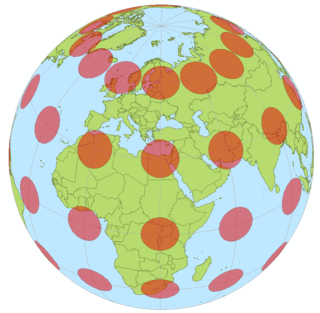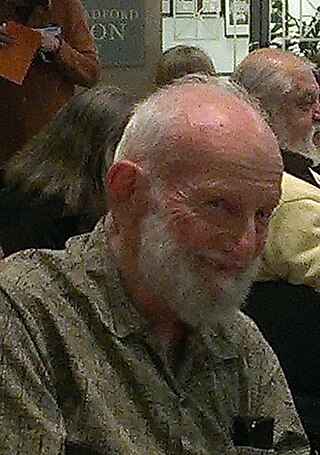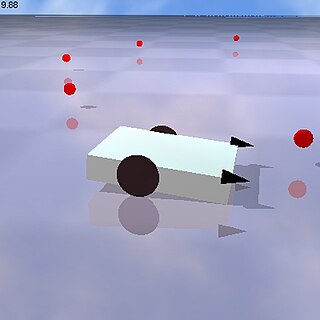Related Research Articles

Observation is an act or instance of noticing or perceiving in the natural sciences and the acquisition of information from a primary source. In living beings, observation employs the senses. In science, observation can also involve the perception and recording of data via the use of scientific instruments. The term may also refer to any data collected during the scientific activity. Observations can be qualitative, that is, only the absence or presence of a property is noted, or quantitative if a numerical value is attached to the observed phenomenon by counting or measuring.

Ambroise Paul Toussaint Jules Valéry was a French poet, essayist, and philosopher. In addition to his poetry and fiction, his interests included aphorisms on art, history, letters, music, and current events. Valéry was nominated for the Nobel Prize in Literature in 12 different years.

Computational biology refers to the use of data analysis, mathematical modeling and computational simulations to understand biological systems and relationships. An intersection of computer science, biology, and big data, the field also has foundations in applied mathematics, chemistry, and genetics. It differs from biological computing, a subfield of computer engineering which uses bioengineering to build computers.
A scientific theory is an explanation of an aspect of the natural world and universe that can be repeatedly tested and corroborated in accordance with the scientific method, using accepted protocols of observation, measurement, and evaluation of results. Where possible, some theories are tested under controlled conditions in an experiment. In circumstances not amenable to experimental testing, theories are evaluated through principles of abductive reasoning. Established scientific theories have withstood rigorous scrutiny and embody scientific knowledge.

Computer simulation is the process of mathematical modelling, performed on a computer, which is designed to predict the behaviour of, or the outcome of, a real-world or physical system. The reliability of some mathematical models can be determined by comparing their results to the real-world outcomes they aim to predict. Computer simulations have become a useful tool for the mathematical modeling of many natural systems in physics, astrophysics, climatology, chemistry, biology and manufacturing, as well as human systems in economics, psychology, social science, health care and engineering. Simulation of a system is represented as the running of the system's model. It can be used to explore and gain new insights into new technology and to estimate the performance of systems too complex for analytical solutions.

The map–territory relation is the relationship between an object and a representation of that object, as in the relation between a geographical territory and a map of it. Mistaking the map for the territory is a logical fallacy that occurs when someone confuses the semantics of a term with what it represents. Polish-American scientist and philosopher Alfred Korzybski remarked that "the map is not the territory" and that "the word is not the thing", encapsulating his view that an abstraction derived from something, or a reaction to it, is not the thing itself. Korzybski held that many people do confuse maps with territories, that is, confuse conceptual models of reality with reality itself. These ideas are crucial to general semantics, a system Korzybski originated.
An agent-based model (ABM) is a computational model for simulating the actions and interactions of autonomous agents in order to understand the behavior of a system and what governs its outcomes. It combines elements of game theory, complex systems, emergence, computational sociology, multi-agent systems, and evolutionary programming. Monte Carlo methods are used to understand the stochasticity of these models. Particularly within ecology, ABMs are also called individual-based models (IBMs). A review of recent literature on individual-based models, agent-based models, and multiagent systems shows that ABMs are used in many scientific domains including biology, ecology and social science. Agent-based modeling is related to, but distinct from, the concept of multi-agent systems or multi-agent simulation in that the goal of ABM is to search for explanatory insight into the collective behavior of agents obeying simple rules, typically in natural systems, rather than in designing agents or solving specific practical or engineering problems.

A metapopulation consists of a group of spatially separated populations of the same species which interact at some level. The term metapopulation was coined by Richard Levins in 1969 to describe a model of population dynamics of insect pests in agricultural fields, but the idea has been most broadly applied to species in naturally or artificially fragmented habitats. In Levins' own words, it consists of "a population of populations".
Modelling biological systems is a significant task of systems biology and mathematical biology. Computational systems biology aims to develop and use efficient algorithms, data structures, visualization and communication tools with the goal of computer modelling of biological systems. It involves the use of computer simulations of biological systems, including cellular subsystems, to both analyze and visualize the complex connections of these cellular processes.
A complex adaptive system is a system that is complex in that it is a dynamic network of interactions, but the behavior of the ensemble may not be predictable according to the behavior of the components. It is adaptive in that the individual and collective behavior mutate and self-organize corresponding to the change-initiating micro-event or collection of events. It is a "complex macroscopic collection" of relatively "similar and partially connected micro-structures" formed in order to adapt to the changing environment and increase their survivability as a macro-structure. The Complex Adaptive Systems approach builds on replicator dynamics.

Simulacra and Simulation is a 1981 philosophical treatise by the philosopher and cultural theorist Jean Baudrillard, in which he seeks to examine the relationships between reality, symbols, and society, in particular the significations and symbolism of culture and media involved in constructing an understanding of shared existence.
Phenomenological life is life considered from a philosophical and rigorously phenomenological point of view. The relevant philosophical project is called "radical phenomenology of life" or "material phenomenology of life". This part of phenomenology has been developed by the French philosopher Michel Henry, since his fundamental book on The Essence of Manifestation; it studies the subjective life of individuals in its pathetic and affective reality as pure impression.

Richard Levins was a Marxist biologist, a population geneticist, biomathematician, mathematical ecologist, and philosopher of science who researched diversity in human populations. Until his death, Levins was a university professor at the Harvard T.H. Chan School of Public Health and a long-time political activist. He was best known for his work on evolution and complexity in changing environments and on metapopulations.
Coalescent theory is a model of how alleles sampled from a population may have originated from a common ancestor. In the simplest case, coalescent theory assumes no recombination, no natural selection, and no gene flow or population structure, meaning that each variant is equally likely to have been passed from one generation to the next. The model looks backward in time, merging alleles into a single ancestral copy according to a random process in coalescence events. Under this model, the expected time between successive coalescence events increases almost exponentially back in time. Variance in the model comes from both the random passing of alleles from one generation to the next, and the random occurrence of mutations in these alleles.
Parrondo's paradox, a paradox in game theory, has been described as: A combination of losing strategies becomes a winning strategy. It is named after its creator, Juan Parrondo, who discovered the paradox in 1996. A more explanatory description is:

An ecosystem model is an abstract, usually mathematical, representation of an ecological system, which is studied to better understand the real system.

William Haynes Starbuck graduated from Harvard University and the Carnegie Institute of Technology. He is an organizational scientist who has held professorships in social relations, sociology, business administration, and management.
Christopher Cherniak is an American neuroscientist, a member of the University of Maryland Philosophy Department. Cherniak's research trajectory started in theory of knowledge and led into computational neuroanatomy and genomics. The underlying linkage between the areas concerns models of the agent: The work began with more realistic, bounded-resource models of rationality. From this epistemology in turn stemmed a research program concerning optimal-wiring models of global brain and genome anatomy, a structuralist approach.

Artificial life is a field of study wherein researchers examine systems related to natural life, its processes, and its evolution, through the use of simulations with computer models, robotics, and biochemistry. The discipline was named by Christopher Langton, an American theoretical biologist, in 1986. In 1987 Langton organized the first conference on the field, in Los Alamos, New Mexico. There are three main kinds of alife, named for their approaches: soft, from software; hard, from hardware; and wet, from biochemistry. Artificial life researchers study traditional biology by trying to recreate aspects of biological phenomena.
All models are wrong is a common aphorism and anapodoton in statistics; it is often expanded as "All models are wrong, but some are useful". The aphorism acknowledges that statistical models always fall short of the complexities of reality but can still be useful nonetheless. The aphorism originally referred just to statistical models, but it is now sometimes used for scientific models in general.
References
- ↑ www.gsb.stanford.edu
- ↑ Charles P. Bonini (1963) Simulation of information and decision systems in the firm, Englewood Cliffs, N. J.: Prentice-Hall
- ↑ W. H. Starbuck (1976) Organizations and their environments; In: M. D. Dunnette (ed.), Handbook of Industrial and Organizational Psychology Chicago: Rand, p. 1069-1123
- ↑ Dutton, John M; Starbuck, William H (1971). Computer Simulation of Human Behavior . Wiley. ISBN 0471228508.
- ↑ Valéry, Paul (1942). Mauvaises pensées et autres. Paris: Éditions Gallimard.
- ↑ Valéry, Paul (1970). Collected Works of Paul Valéry, Volume 14, Analects. Translated by Stuart Gilbert. Princeton University Press. p. 466.
- ↑ Levins, Richard (1966). "The strategy of model building in population biology" (PDF). American Scientist . 54 (4): 421–431. JSTOR 27836590. Archived from the original (PDF) on 2 February 2016.
- ↑ Odenbaugh, Jay (15 February 2007). "The strategy of "The strategy of model building in population biology"". Biology & Philosophy. 21 (5): 607–621. doi:10.1007/s10539-006-9049-3. S2CID 171020133.
- ↑ Orzack, Steven Hecht; Sober, Elliott (December 1993). "A Critical Assessment of Levins's The Strategy of Model Building in Population Biology (1966)" (PDF). The Quarterly Review of Biology. 68 (4): 533–546. doi:10.1086/418301. S2CID 83524824.